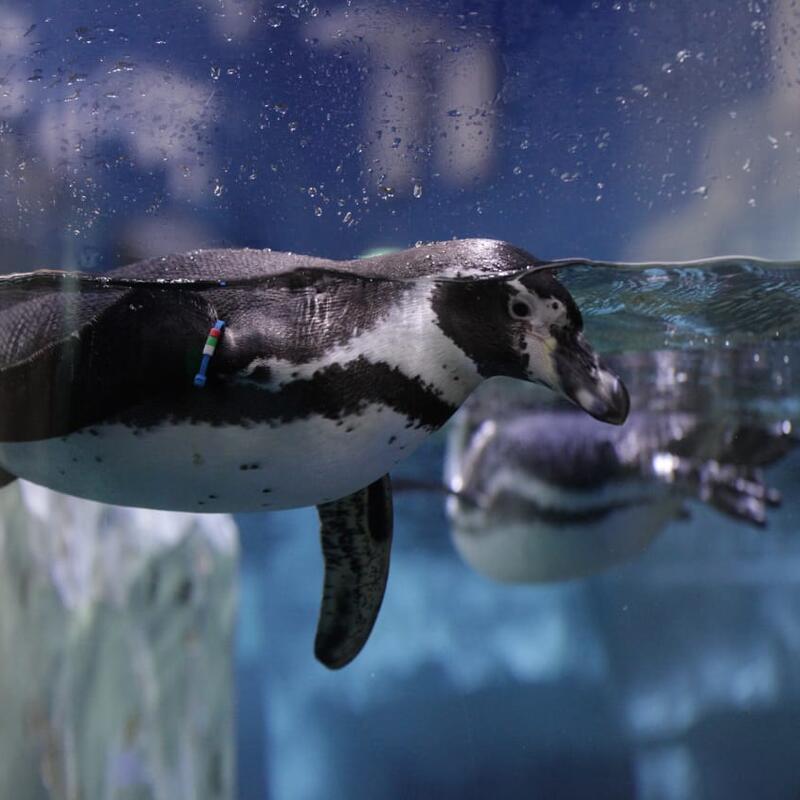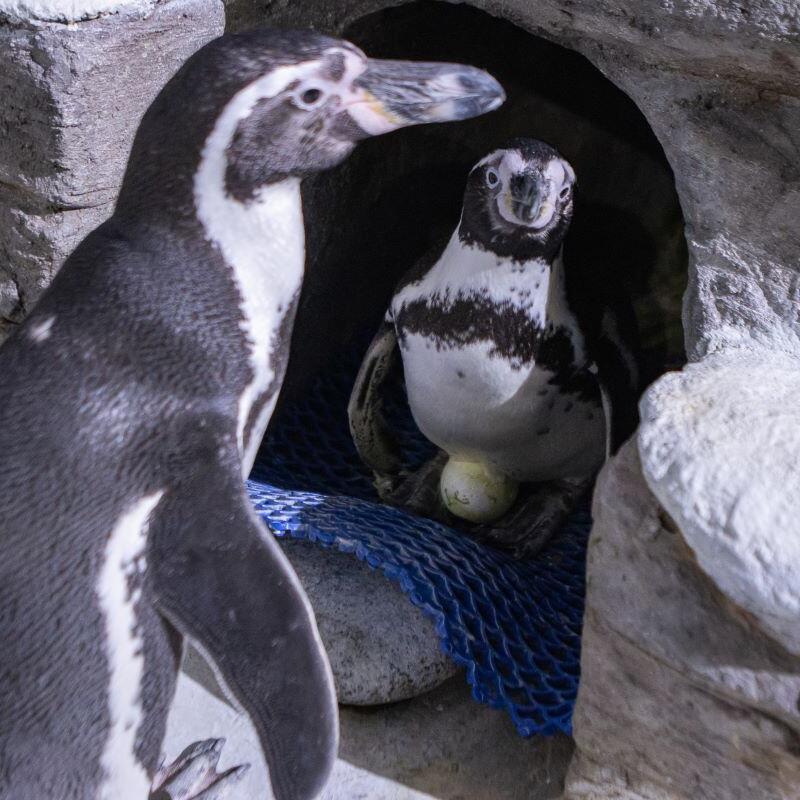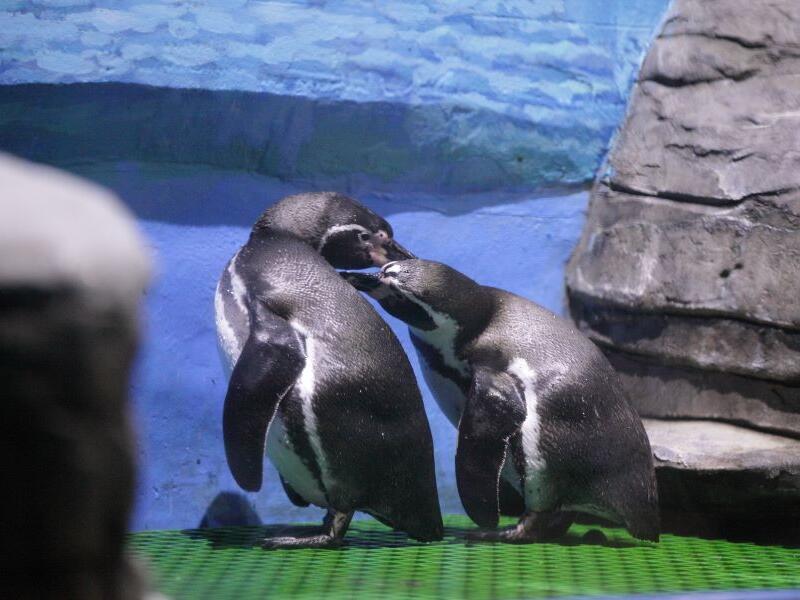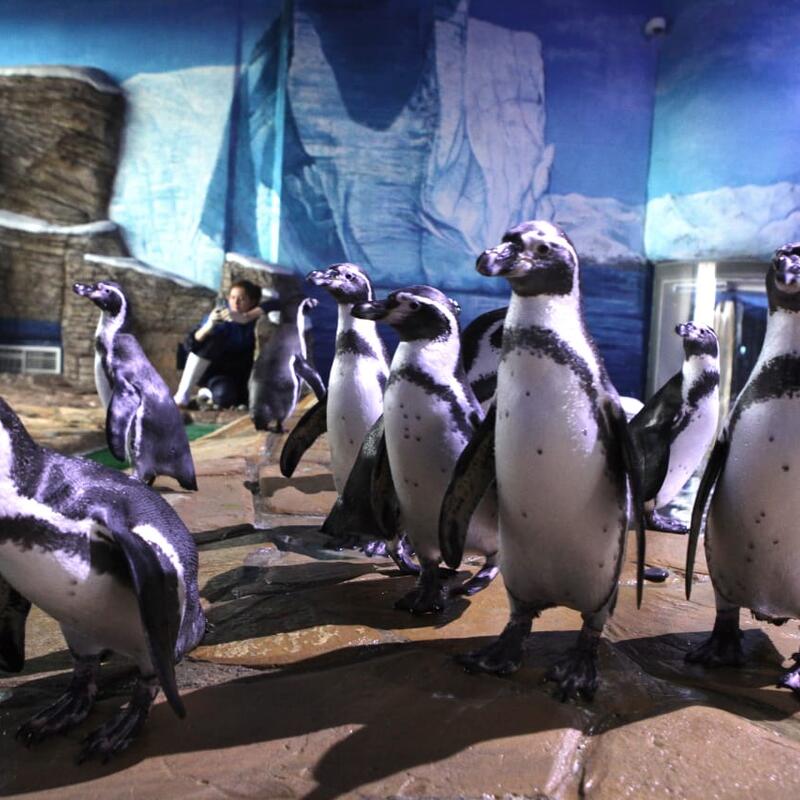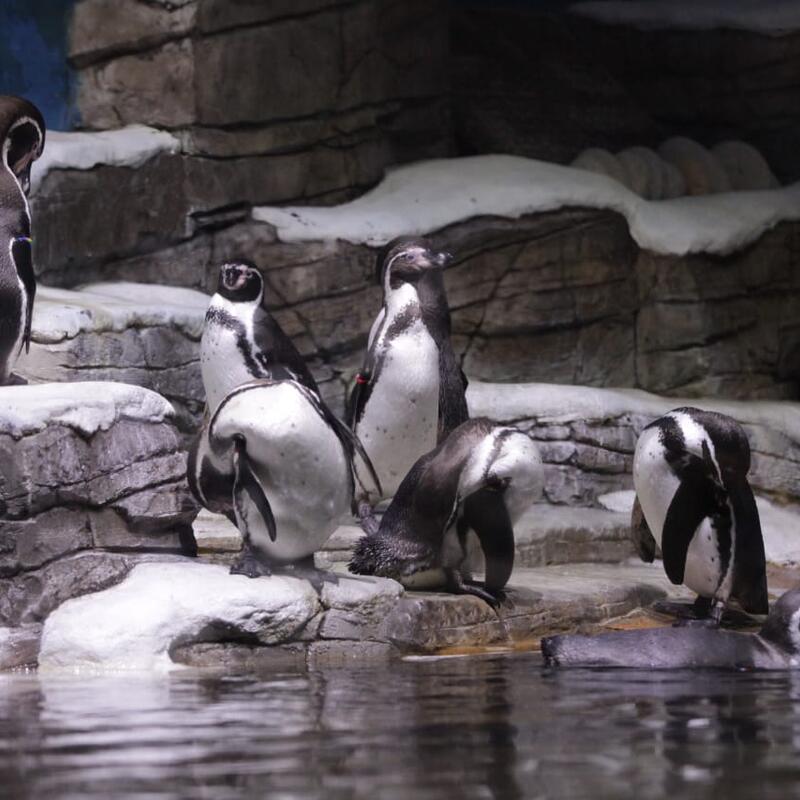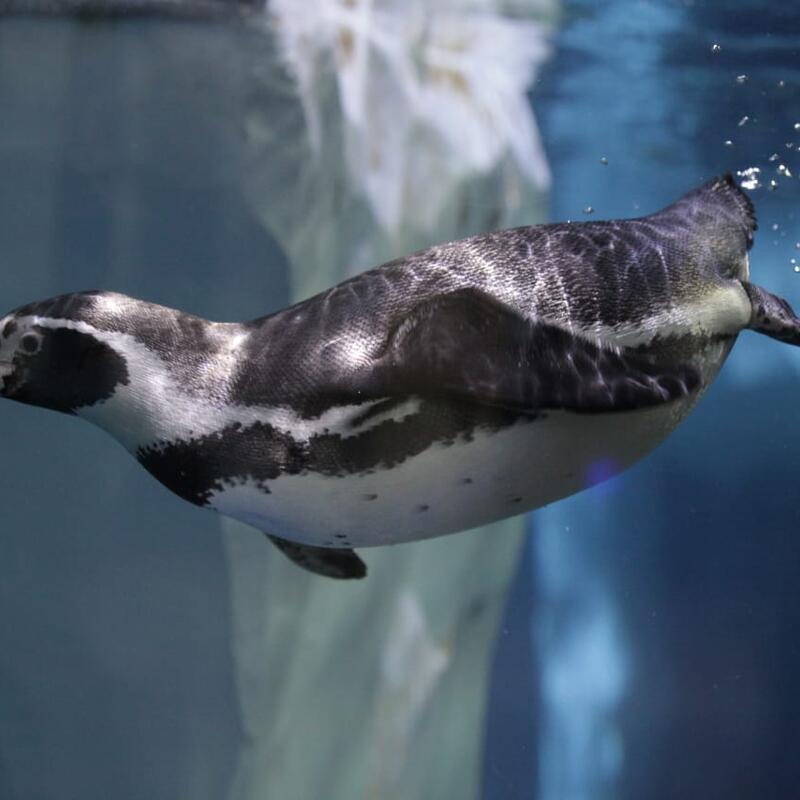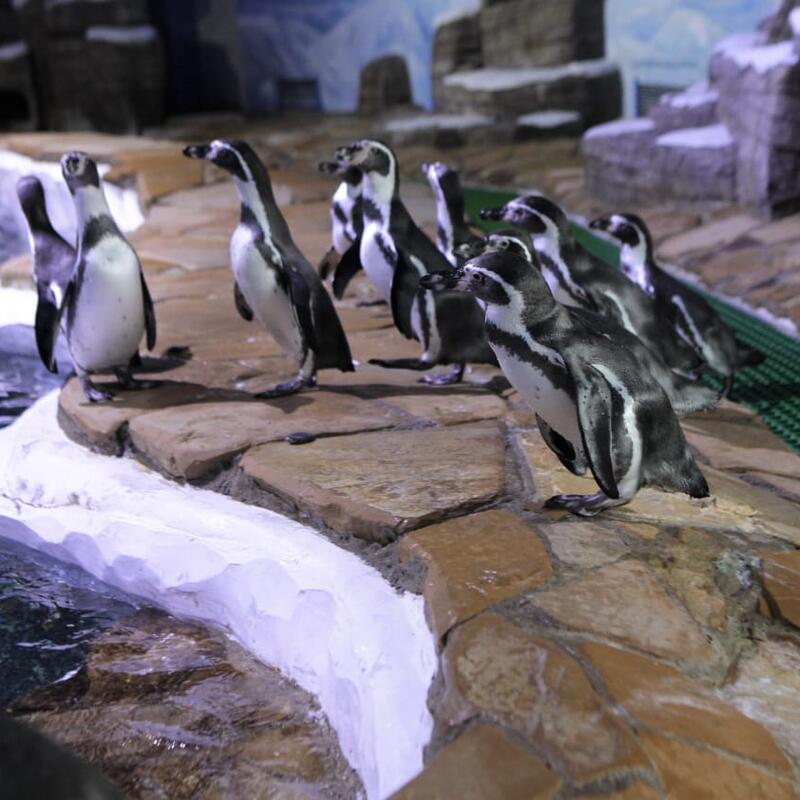
Humboldt penguins
Humboldt penguins Spheniscus humboldti have been living at the Primorsky Aquarium since 2018, and have hatched over 40 chicks since that time. Our colony includes about 60 individuals, all residing in the Polar World exhibit.
Penguins are among the most unusual birds on the planet. According to some scientists, they lost their ability to fly more than 60 million years ago during the course of evolution. They use their wings called ‘flippers’ for swimming and diving and they use their legs and webbed feet for steering. While the bones of flying birds are hollow and air-filled penguins’ bones are solid, which is necessary for deep diving. When penguins molt, they lose all their feathers at once. They are unable to swim in this state and thus have to fast until their new feathers grow. Penguins deliberately ingest stones to provide ballast for diving to over 100 meters. They can drink salty seawater because they have a salt (supraorbital) gland that filters sodium chloride out of their body through the nasal passages on their beak. These are just a few of the unique features of penguins.
The Primorsky Aquarium is the only institution in Russia that determines the sex of Humboldt penguins by molecular methods. Females and males in penguins generally have the same coloration of plumage, thus making it very difficult to discriminate genders. Specialist of the Ornithology Department, cytologist Miroslava Sabutskaia has been trained to use DNA-based techniques of sexing at the Laboratory of Pharmacology of the NSCMB FEB RAS.
A fun fact about the courtship ritual: penguin males try to woo a female by presenting her with a pebble, and if she likes it, she chooses the suitor and they build a nest together. Sixteen couples have been formed at the Aquarium since the birds arrived here and the partners really stick together. And once the penguins pair up, it is time for the babies. There are two main breeding seasons for Humboldt penguins at the Primorsky Aquarium, spring and autumn, with more chicks appearing in autumn. These seasons are busy periods for the keepers. First, birds choose their nesting sites, and the keepers put soft rubber mats and plastic rings to help them build the nests. Each female usually lays two eggs, the second one three days later than the first one. The team members examine each egg once a week to assess its fertility and to monitor the embryo development. The penguin mates take turns incubating their eggs, working in variable shifts.
The incubating parents should be fed separately from the other penguins. However, when chicks hatch, there isn’t yet time for the keepers to relax. The dedicated care team has to control how the chicks grow and weigh them every three days. The parents feed their offspring regurgitated fish for two months, but later the chicks are transferred to a separate enclosure to teach them how to eat solid fish, which takes another three to four weeks.
The established protocol for breeding penguins at the Primorsky Aquarium gives the birds freedom to express their normal reproductive behavior. The keepers only monitor the egg incubation process and the overall health of the breeders. All the penguin pairs successfully reproduce, which means that the original penguin population that arrived in 2018 was healthy and genetically diverse. The conditions in which the birds live are also very important for breeding, and it turns out that the penguins’ habitat here recreates well their natural environment.
“The egg is incubated for 38 to 45 days depending on the air temperature at the start of nesting,” said Vladislava Kreshchenovskaia, Principal Specialist of the Ornithology Department, Primorsky Aquarium. “Both the mother and the father care for the offspring. The astonishing fact is that Humboldt penguins usually mate for life and do not change partners.”
Every adult penguin eats 900 grams of fish, smelt and capelin. The birds have three meals a day: a light breakfast, a lunch and a heavy dinner. Small chicks are fed by their parents. After the first molt they replace their juvenile down with waterproof feathers. After that, they learn how to swim and switch to adult food.
Humbolt penguin feeding takes place at 14.00 and 18.30 in the Polar World exhibit.
Trainers


